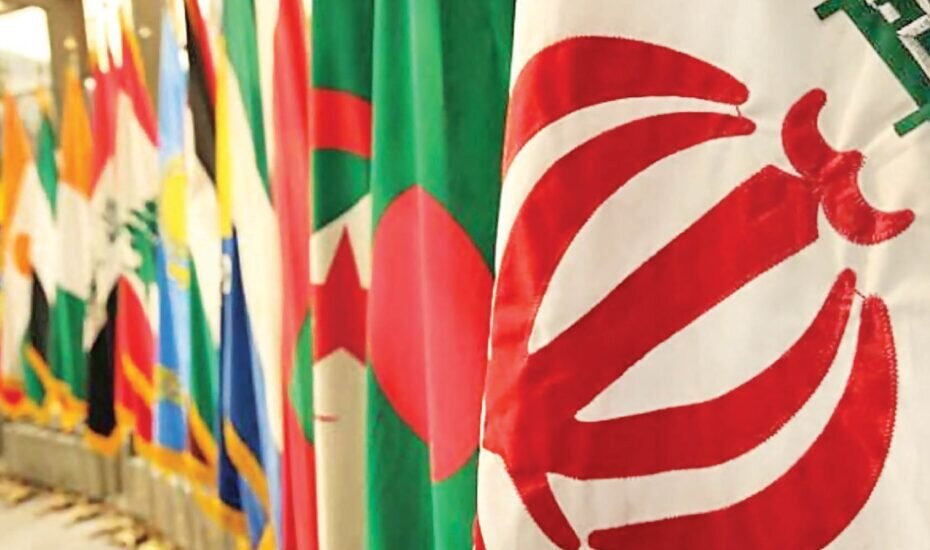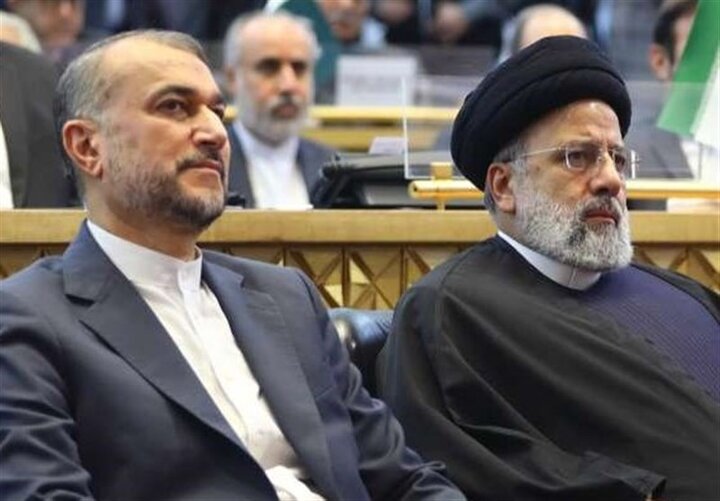Iranian diplomacy in sensitive historical sites

Mehr News Agency, Politics Group – Nafiseh Abdollahi: Year 2 was one of the most fateful and decisive years of contemporary Iranian history in the field of foreign policy; The year began with the testimony of President Ayatollah Seyyed Ibrahim Raisi and Foreign Minister Hossein Amir Abdollahian, and continued with the election of a new president and the formulation of new diplomatic strategies. This year was a combination of resistance, bitter events, diplomatic opportunities and strategic changes in the Islamic Republic of Iran's foreign policy path.
Testimony, the beginning of the new chapter of Iran's foreign policy
May 1, Iran, in the mourning of two influential figures in its domestic and foreign politics. Ayatollah Raisi and Hussein Amir Abdollahian were martyred in an air accident; An accident that immediately sparked a wave of domestic and international reactions. The Iranian President and Foreign Minister were martyred while both played a prominent role in the formulation and implementation of the Islamic Republic of Iran's foreign policy; From the strategy of looking to the East to support the axis of resistance and countering Western sanctions. The incident created a major challenge for Iran's foreign policy, as it not only lost two of the country's main diplomacy architects, but had to introduce their successors in critical circumstances.

International reaction; Support or calculate?
After the news of the testimony of the President and the Iranian Foreign Minister, the world saw a wide wave of condolences messages. The Iranian allies and the resistance groups in the region considered the incident a major lesion for the anti -regional front. On the other hand, some Western countries condoled this in a cautious tone, but analysts described it as more of a diplomatic behavior than expressing true sympathy.
However, the United States and some European countries, with opportunistic view, saw the incident as a factor in examining possible changes in Iranian foreign policy. They thought that the change at the top of Iran's executive pyramid might lead Tehran to more compromised policies; The notion that was soonerly contributed to Iran's resistance policies.
Presidential election; New path or continuity of strategies?
With the testimony of Ayatollah Raisi, Iran found itself against one of the most important elections in contemporary history. The country's political space was quickly prepared to choose his successor. The election was not only domestically, but also internationally, as the new president had to lead Iran's foreign policy at one of the most sensitive historical sections.
The important point was that in this election, the country's various political tendencies were competing or changing in foreign policy. Will Ayatollah Raisi's path and look at the East still prioritize? Will the Resistance Policy and Support for the Resistance Axis continue? Or will the new government move towards redefining relations with the West and some kind of conditional interaction?
Finally, the elected president emphasized the preservation of the Iranian foreign policy principles. In his first speeches, he emphasized the continuation of active regional diplomacy, supporting the axis of resistance, the development of relations with Eastern countries, and the impact of sanctions through international economic cooperation.
Iran's foreign policy after the election; Diplomacy of Resistance and Development
After the new government came to power, Iran's foreign policy focused on several main axes:
Continue the strategy of looking east
Iran continued to emphasize the expansion of strategic cooperation with China and Russia in year 6. A member of the Shanghai Cooperation Organization and strengthening economic relations with Brix member states were among the measures of this route. Economic and military cooperation with these countries, especially on circumventing Western sanctions, was still a top priority.
Increased role in regional equations
The testimony of the President and the Foreign Minister had no effect on Iranian politics in the region. Supporting the axis of resistance in Palestine, Lebanon, Iraq and Yemen continued, and Tehran continued to stand up to the Zionist regime's developmental policies and US intervention in the region. Palestinian resistance attacks against the Zionist regime, Iran's strong responses to security threats and explicit support for the Resistance Front showed that Iran's strategy has not changed.
Conditional interaction with the West
While Iran expanded its relations with Eastern countries, diplomacy with Europe and even the United States continued in some areas, under conditions where the red lines of the Islamic Republic were respected. Negotiations were followed in some economic and political areas without exaggeration from the principles of foreign policy of the country.
Revival of economic diplomacy
With the emergence of the new government, the policy of developing non -oil export, expanding economic cooperation with neighbors and facilitating trade routes were among the top priorities of Iran's foreign policy. Attempts to reduce the effects of sanctions and increase foreign investment, especially by the countries of the region, were seriously pursued.
Yemen, Palestine and continue the policy of supporting the Resistance Front
One of the most important focus of Iran's foreign policy in the year 2 was the support of the Resistance Front. During the new Zionist aggression against the Gaza people, Iran played a key role in supporting resistance groups. In addition, Yemen, as one of the most important actors on the axis, exacerbated its attacks against Zionist and US -affiliated ships. Tehran supported these movements directly and indirectly and emphasized the continuation of the resistance path. Iran also sought to keep the Palestinian case alive internationally with active diplomacy and to strengthen the global consensus against the crimes of the Zionist regime through diplomatic meetings.
Iran's diplomatic challenges and opportunities in year 2
Iran's foreign policy this year faced both challenges and had opportunities to expand diplomatic influence.
Among these challenges were “economic pressure from sanctions”, “Western efforts to isolate Iran internationally”, “Zionist regime security threats and some countries in the region” and “the complexities of domestic politics and some disputes about how to interact with the West”.
But as mentioned, there were opportunities to expand diplomatic influence; Including “Increasing Iran's role in regional and global equations”, “expanding economic and strategic cooperation with China, Russia and neighboring countries”, “continuing support for resistance and increasing Iran's international legitimacy among independent countries”, “active presence in international organizations to counter Western pressure”.
Fateful Year for Iranian Foreign Policy
Year 2 was an accident and sensitive year in Iranian foreign policy. The testimony of the President and the Secretary of State, the presidential election, the continuation of support for resistance, regional and international interactions, and the confrontation with Western pressure, made it all the milestones in Iranian diplomacy. Ultimately, this year's foreign policy of the Islamic Republic of Iran was not only withdrawn despite the major challenges, but also reinforced its position in global equations.
(Tagstotranslate) Iranian Foreign Affairs (T) Hussein Amir Abdullahian (T) USA Russia (T) China (T) Zionist regime (T) Yemen (T) Palestine (T) Palestinian Resistance Front (T) Iraq (T) Gaza (T) Martyr Ayatollah Seyed Ibrahim Raisi (T)
Source:mehrnews